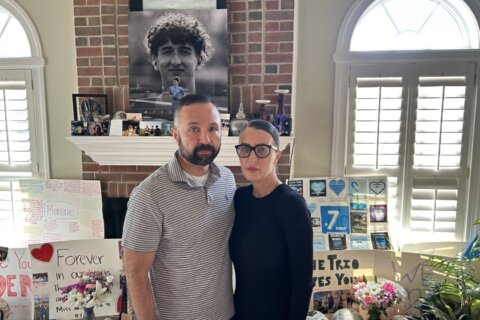The Fairfax County Fire and Rescue Department is reorganizing some of its response teams in an effort to ensure it responds to all emergencies appropriately.
At a Safety and Security Committee meeting Tuesday, Assistant Chief of Operations Dan Shaw said the agency will convert eight Advanced Life Support Units to Basic Life Support Units in January.
What’s the difference?
The advanced units, Shaw told WTOP, are usually staffed with a paramedic. Basic units are staffed by an EMT. The differences, he said, depend on training and certification. An EMT wouldn’t be able to use a pharmacological intervention, so “they’re not giving IVs,” he said.
In the first months of 2022, the department converted 12 Advanced Life Support units to basic units. That followed a 2021 review of how the department was organized and used its resources.
The changes coming early next year, Shaw said, are the result of data revealing many calls can be addressed with the Basic Life Support Units.
“We want to have the right unit, the right person, the right certification for the right call that’s happening right now,” Shaw said. “When we look at that data, we know the majority of calls we run, and we’re still gathering that information, tend to be of a basic life support nature.”
At Tuesday’s meeting, Shaw said sending an advanced unit to an emergency that doesn’t require one has consequences.
“[It] results in a paramedic being unavailable for the next potential ALS call in that area,” Shaw said.
Once the changes are made in January, the department will have a paramedic in every fire station, in addition to deploying 23 advanced units and 20 basic units.
The agency is also planning to introduce an EMS Specialist position in January. That paramedic is “an advanced practice provider that can deliver a higher skill set and bring advanced intervention and equipment to the incident,” according to a presentation from Tuesday’s meeting.
“We will provide the most effective and efficient services to our citizens when they call 911 on what they deem is potentially the worst day of their life, when they call and ask for our assistance,” Shaw told WTOP.
Earlier this year, the department started using a new Emergency Medical Protocol, which helps dispatchers deploy the proper responders to any given incident.
“What we want to do is be able to know exactly what the issue is you’re having, and then be able to dispatch resources appropriately to handle your emergency,” Shaw said. “When you look across the country, there’s no fire departments that have just an endless stream of resources to deploy.”
The department is currently conducting an analysis of its staffing model and how much overtime its workers are recording. Shaw said there’s a decline in the number of people who want to work in public safety professions.
“That’s one of the greatest challenges we face, is to find more and more people of that high caliber integrity, who represent our organization, to be able to assist people on their worst day,” Shaw said.








